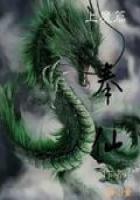On the eighth of August the party reached a point now known by its famous landmark, Beaver Head, a remarkable rocky formation which gives its name to Beaverhead County, Montana. The Indian woman, Sacajawea, recognized the so-called beaver-head, which, she said, was not far from the summer retreat of her countrymen, living on the other side of the mountains. The whole party were now together again, the men with the canoes having come up; and the journal says:--"Persuaded of the absolute necessity of procuring horses to cross the mountains, it was determined that one of us should proceed in the morning to the head of the river, and penetrate the mountains till he found the Shoshonees or some other nation who can assist us in transporting our baggage, the greater part of which we shall be compelled to leave without the aid of horses.". . .
Early the next day Captain Lewis took Drewyer, Shields, and M'Neal, and, slinging their knapsacks, they set out with a resolution to meet some nation of Indians before they returned, however long they might be separated from the party.
The party in the canoes continued to ascend the river, which was so crooked that they advanced but four miles in a direct line from their starting-place in a distance of eleven miles.
In this manner, the party on foot leading those with the canoes, they repeatedly explored the various forks of the streams, which baffled them by their turnings and windings. Lewis was in the advance, and Clark brought up the rear with the main body.
It was found necessary for the leading party to wade the streams, and occasionally they were compelled by the roughness of the way to leave the water-course and take to the hills, where great vigilance was required to keep them in sight of the general direction in which they must travel.
On the 11th of August, 1805, Captain Lewis came in sight of the first Indian encountered since leaving the country of the Minnetarees, far back on the Missouri. The journal of that date says:
"On examining him with the glass Captain Lewis saw that he was of a different nation from any Indians we had hitherto met.
He was armed with a bow and a quiver of arrows, and mounted on an elegant horse without a saddle; a small string attached to the under jaw answered as a bridle.
"Convinced that he was a Shoshonee, and knowing how much our success depended on the friendly offices of that nation, Captain Lewis was full of anxiety to approach without alarming him, and endeavor to convince him that he [Lewis] was a white man.
He therefore proceeded toward the Indian at his usual pace.
When they were within a mile of each other the Indian suddenly stopped.
Captain Lewis immediately followed his example, took his blanket from his knapsack, and, holding it with both hands at the two corners, threw it above his head, and unfolded it as he brought it to the ground, as if in the act of spreading it.
This signal, which originates in the practice of spreading a robe or skin as a seat for guests to whom they wish to show a distinguished kindness, is the universal sign of friendship among the Indians on the Missouri and the Rocky Mountains. As usual, Captain Lewis repeated this signal three times: still the Indian kept his position, and looked with an air of suspicion on Drewyer and Shields, who were now advancing on each side.
Captain Lewis was afraid to make any signal for them to halt, lest he should increase the distrust of the Indian, who began to be uneasy, and they were too distant to hear his voice.
He therefore took from his pack some beads, a looking-glass, and a few trinkets, which he bad brought for the purpose, and, leaving his gun, advanced unarmed towards the Indian. He remained in the same position till Captain Lewis came within two hundred yards of him, when he turned his horse and began to move off slowly.














